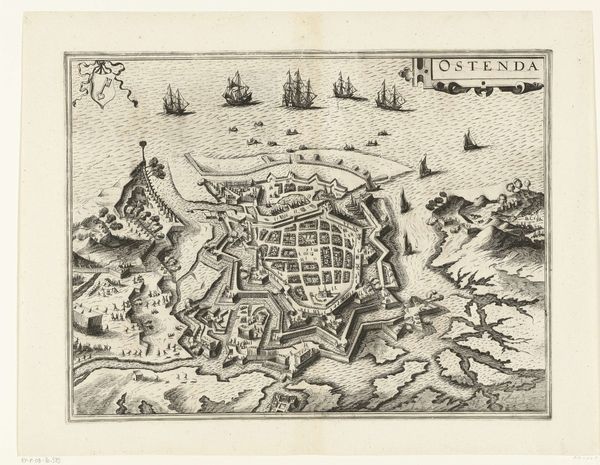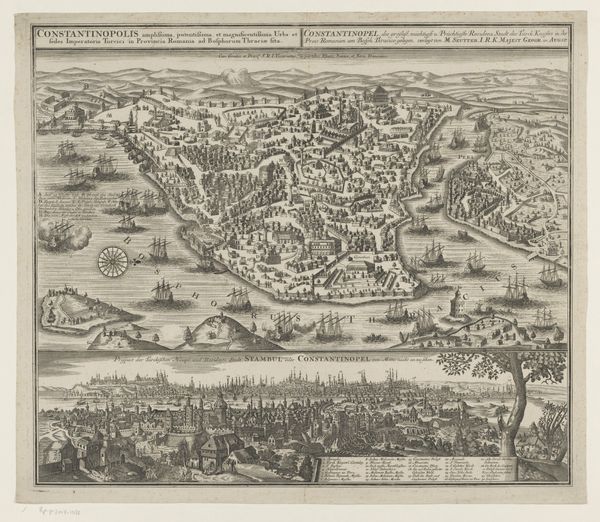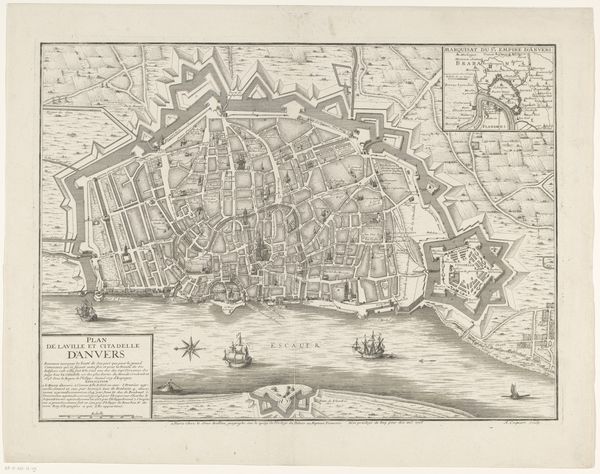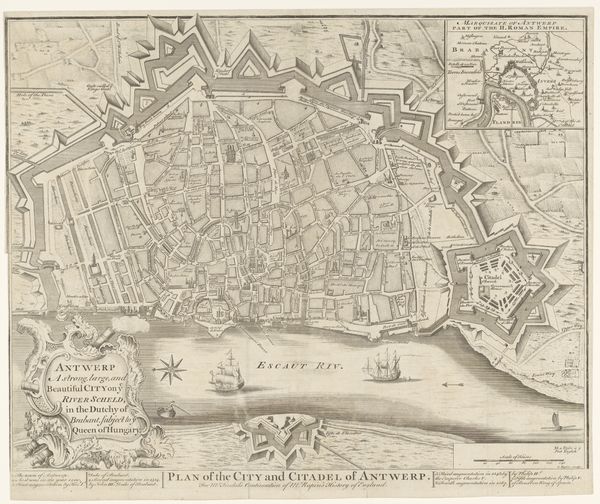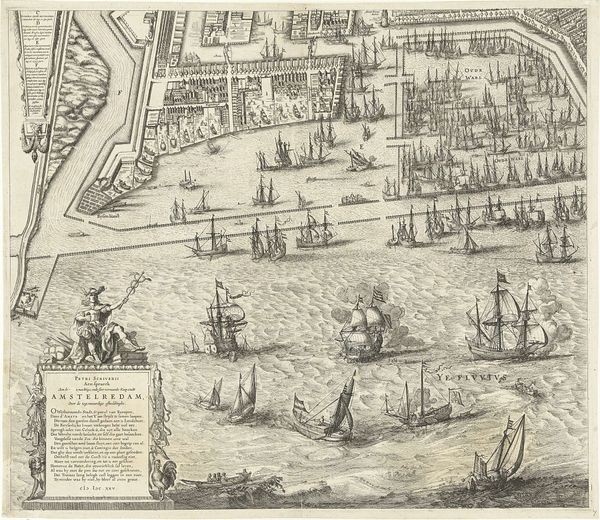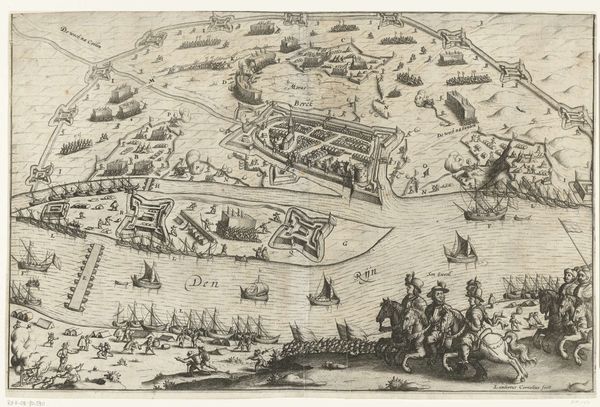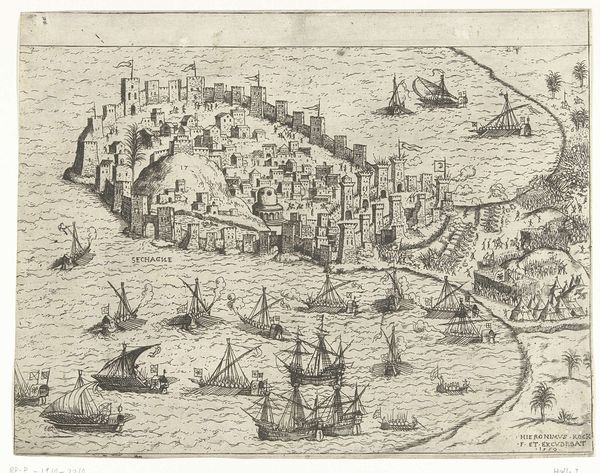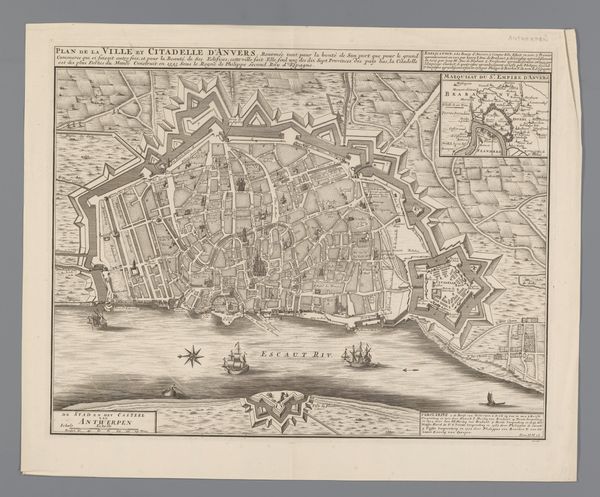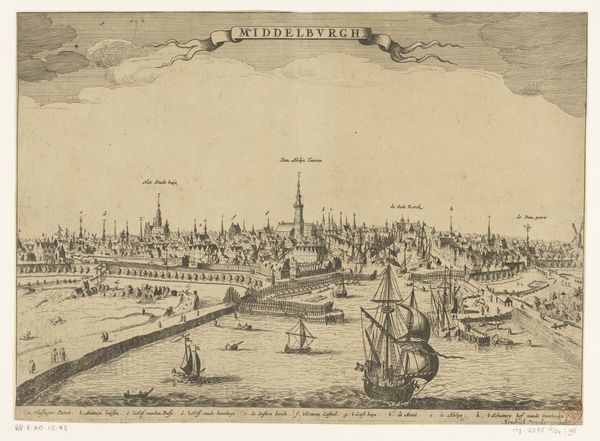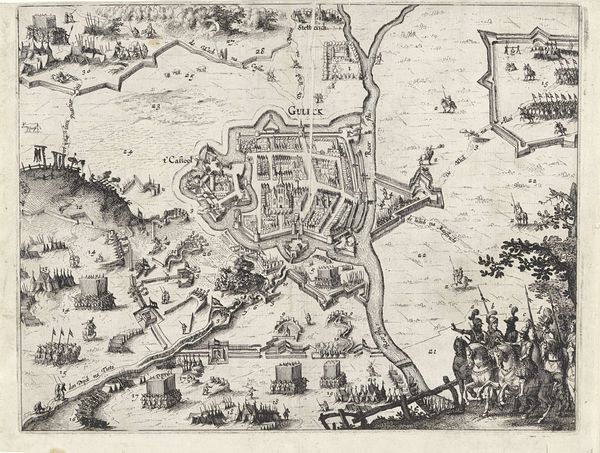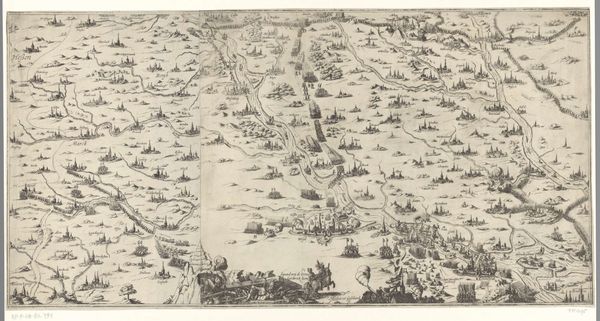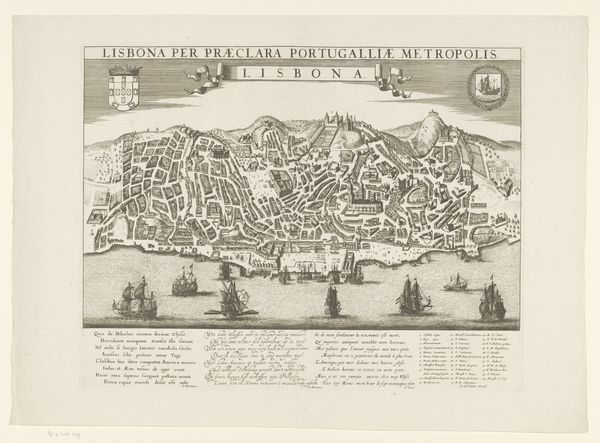
Plattegrond van Lissabon met een gezicht op Lissabon tijdens de aardbeving in 1755 1755 - 1757
0:00
0:00
print, engraving
#
pen and ink
#
pen drawing
#
mechanical pen drawing
# print
#
pen illustration
#
pen sketch
#
old engraving style
#
landscape
#
pen-ink sketch
#
pen work
#
cityscape
#
coloring book page
#
engraving
#
intricate and detailed
Dimensions: height 504 mm, width 585 mm
Copyright: Rijks Museum: Open Domain
Editor: Here we have "Plattegrond van Lissabon met een gezicht op Lissabon tijdens de aardbeving in 1755" made between 1755 and 1757, attributed to Matthaeus Seutter. It appears to be a meticulously rendered print of the city, contrasting sharply with the chaotic depiction of the earthquake's aftermath below. What strikes me most is the detailed rendering of the city's structure above the utter devastation below. What do you see in this piece? Curator: This engraving presents us with a fascinating duality, doesn't it? It depicts not only a city but also a pivotal moment in its history through the lens of its production. Let's consider the materials: ink and paper. These readily available, mass-produced materials democratize the distribution of this powerful image, reaching a wider audience far removed from the immediate reality of the earthquake. Editor: So the print itself is a kind of industrial product, reflecting the social context in which it was made? Curator: Precisely. It's crucial to understand how this image functioned as a commodity. Prints like these satisfied a public hunger for news and spectacle. The depiction of the earthquake becomes almost like a consumable object, a mediated experience of disaster. Consider how the artist used readily available methods to duplicate an image across various geographies. Editor: I see, the stark contrast emphasizes both the power of nature and, perhaps, the vulnerability of human constructs, but filtered through the marketplace of images. Curator: Indeed. And that mediation itself is the product of very specific labor and production methods. Ask yourself, how does the choice of a mass-producible print change the event being represented and consumed? The very act of representing a catastrophe as a saleable print alters its meaning. What did you think of that today? Editor: I never considered it in this way. The print’s function as a distributed, reproducible artifact is something to think about. Curator: Exactly, analyzing the materials and means of production illuminates the artwork’s purpose beyond mere representation, which gives greater context and awareness to modern mediums.
Comments
No comments
Be the first to comment and join the conversation on the ultimate creative platform.
